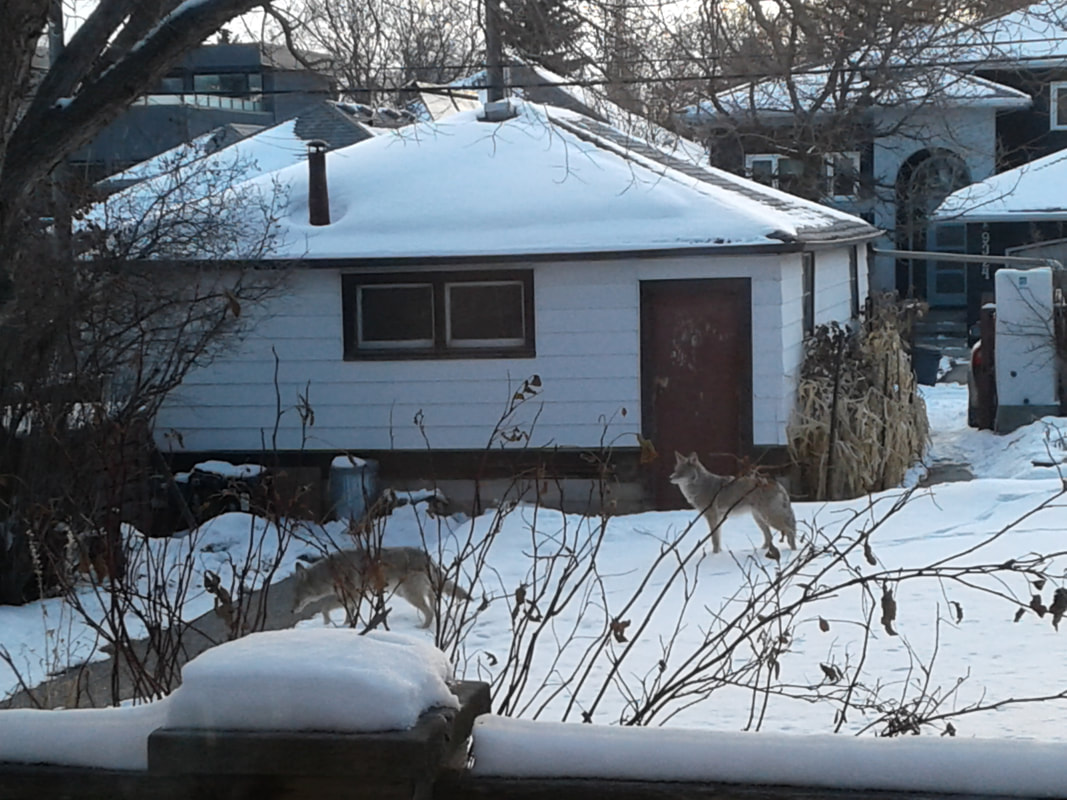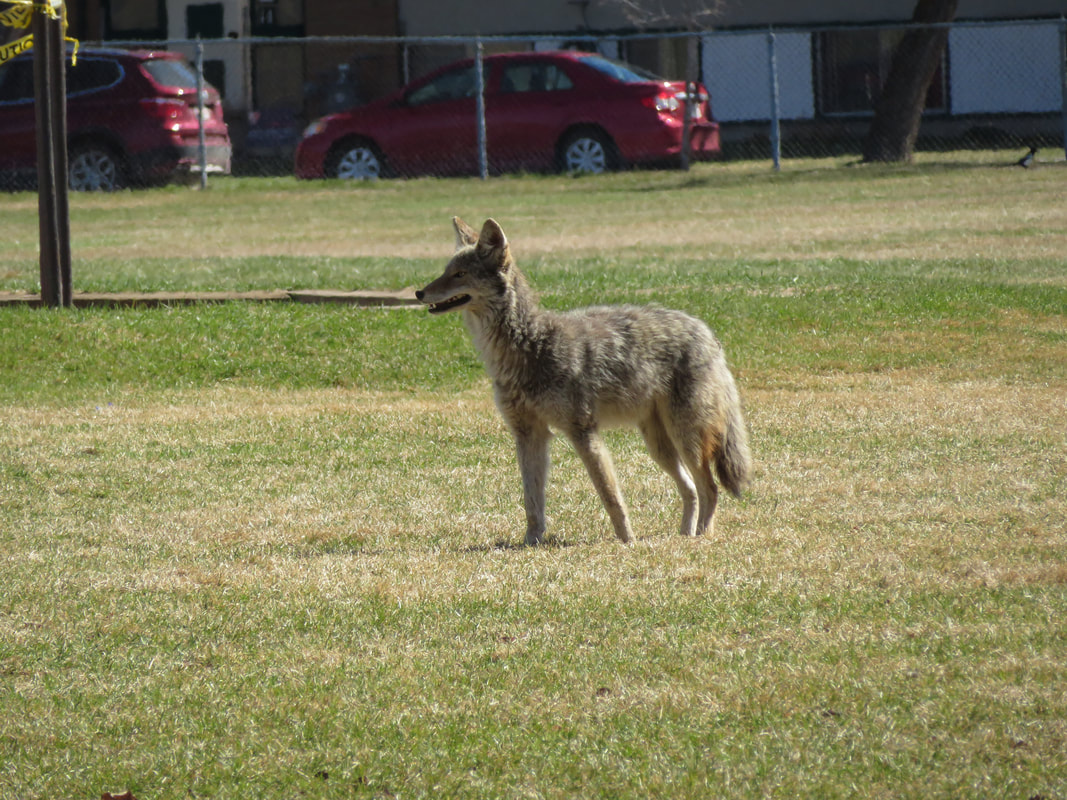THIS PROGRAM IS NOW FINISHED.
Urban coyotes are increasingly common across North America, with large populations in most Canadian cities, including Calgary and Edmonton. Although coyotes rarely attack people, they may pursue pets, approach people, and den underneath houses, making them a potential threat to the safety of people and their pets.
Many governments, including the Government of Alberta and the City of Edmonton, recommend hazing as a humane way to manage bold, urban coyotes. The City of Oakville has produced an excellent video about hazing here. This technique has only recently been studied; so far, there are few guidelines for implementing these approaches. The Humane Society of the United States recommends hazing by clapping hands, stomping feet, shaking noisemakers, spraying the animal with a hose, and throwing sticks or rocks in the direction of the coyote. However, low-intensity hazing may not intimidate coyotes and could even contribute to their habituation to people.
Aversive Conditioning extends the concept of hazing by using a deterrent or a negative stimulus to discourage undesirable behaviour over time, with an expectation that repeated exposure will teach animals greater wariness towards people. In this project, we define hazing as the act of using deterrents to immediately change a coyote’s behaviour, while Aversive Conditioning is the repeated and consistent use of deterrents to reduce the occurrence of similar behaviours in similar contexts over the long-term. Our lab has studied Aversive Conditioning previously in black bears and elk.
Many governments, including the Government of Alberta and the City of Edmonton, recommend hazing as a humane way to manage bold, urban coyotes. The City of Oakville has produced an excellent video about hazing here. This technique has only recently been studied; so far, there are few guidelines for implementing these approaches. The Humane Society of the United States recommends hazing by clapping hands, stomping feet, shaking noisemakers, spraying the animal with a hose, and throwing sticks or rocks in the direction of the coyote. However, low-intensity hazing may not intimidate coyotes and could even contribute to their habituation to people.
Aversive Conditioning extends the concept of hazing by using a deterrent or a negative stimulus to discourage undesirable behaviour over time, with an expectation that repeated exposure will teach animals greater wariness towards people. In this project, we define hazing as the act of using deterrents to immediately change a coyote’s behaviour, while Aversive Conditioning is the repeated and consistent use of deterrents to reduce the occurrence of similar behaviours in similar contexts over the long-term. Our lab has studied Aversive Conditioning previously in black bears and elk.
You can find more information on past Aversive Conditioning or hazing projects for urban coyotes in the following papers:
More information about how our lab has previously applied Aversive Conditioning to bears and elk can be found in the following thesis and papers:
- Bonnell MA, Breck SW. 2017. Using resident-based hazing programs to reduce human-coyote conflicts in urban environments. Human-wildlife interactions. 11(2): 146-155.
- Breck SW, Poessell SA, Bonnell MA. 2017. Evaluating lethal and nonlethal management options for urban coyotes. Human-wildlife interactions. 11(2): 133-145.
- McLellan BA, Walker KA. 2020. Efficacy of motion-activated sprinklers as a human deterrent for urban coyotes. Human Dimensions of Wildlife.
- Young JK, Hammill E, Breck SW. 2019. Interactions with humans shape coyote responses to hazing. Scientific Reports. 9(1): 1-9.
More information about how our lab has previously applied Aversive Conditioning to bears and elk can be found in the following thesis and papers:
- Homstoll L. 2011. Application of learning theory to human-bear conflict: the efficacy of aversive conditioning and conditioned taste aversion. Master’s thesis, The University of Alberta.
- Kloppers EL, St. Clair CC, Hurd TE. 2005. Predator-resembling aversive conditioning for managing habituated wildlife. Ecology and Society. 10(1).
- Found R, St. Clair CC. 2016. Behavioural syndromes predict loss of migration in wild elk. Animal behaviour. 115: 35-46.
- Found R, St. Clair CC. 2017. Ambidextrous ungulates have more flexible behaviour, bolder personalities and migrate less. Royal society open science. 4(2).
- Found R, St. Clair CC. 2019. Influences of personality on ungulate migration and management. Frontiers in ecology and evolution. 7(438).



